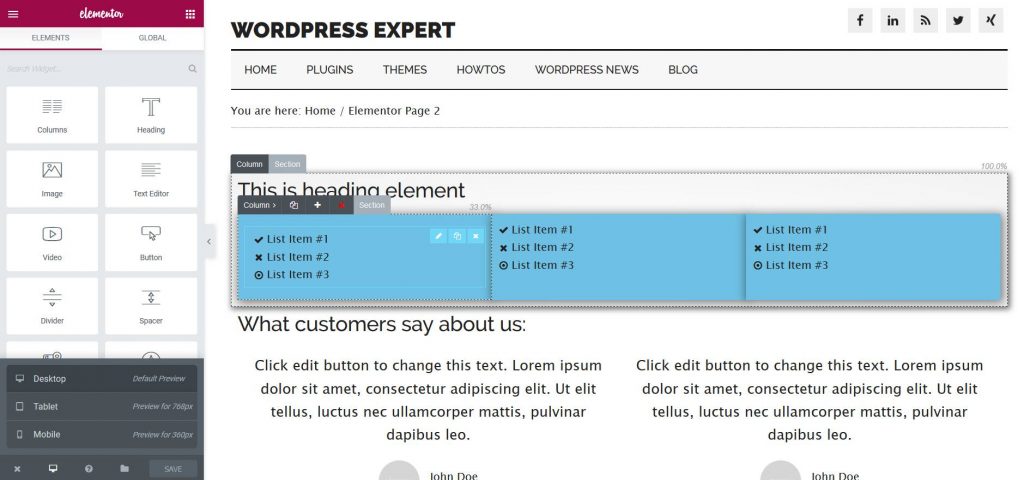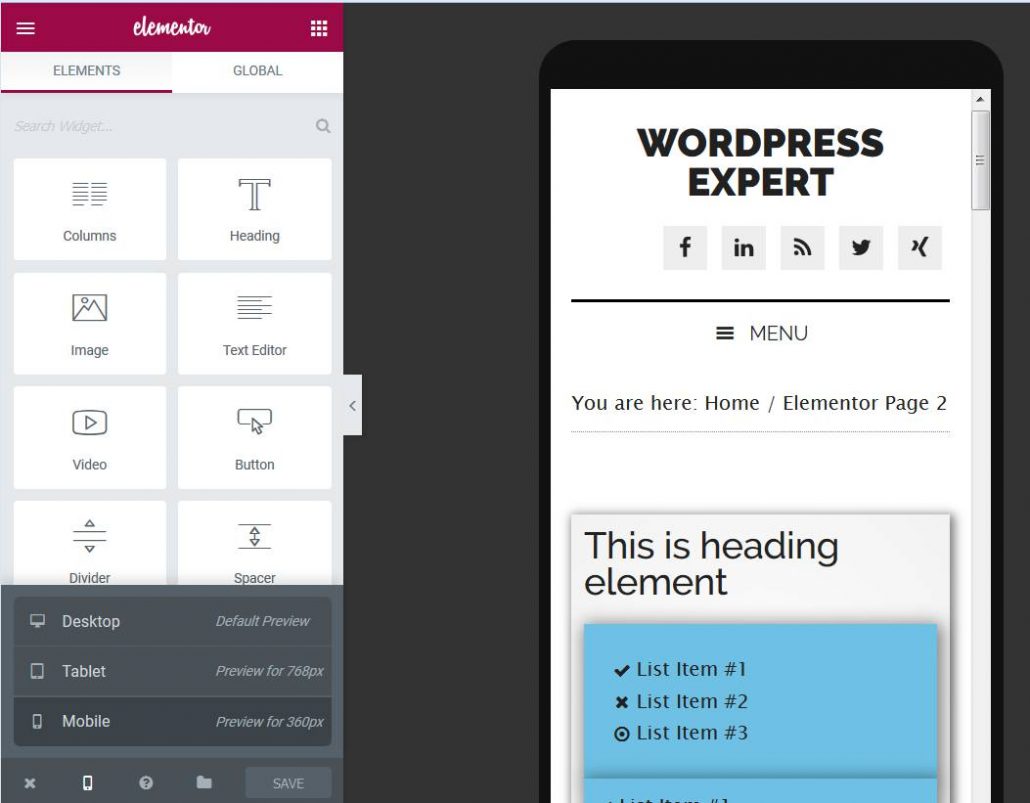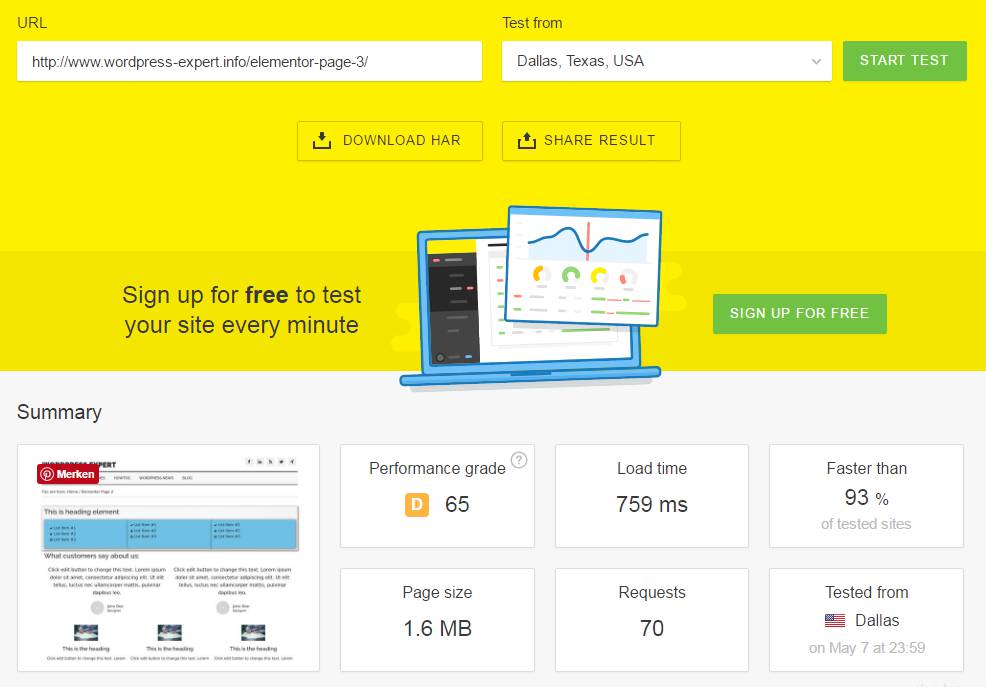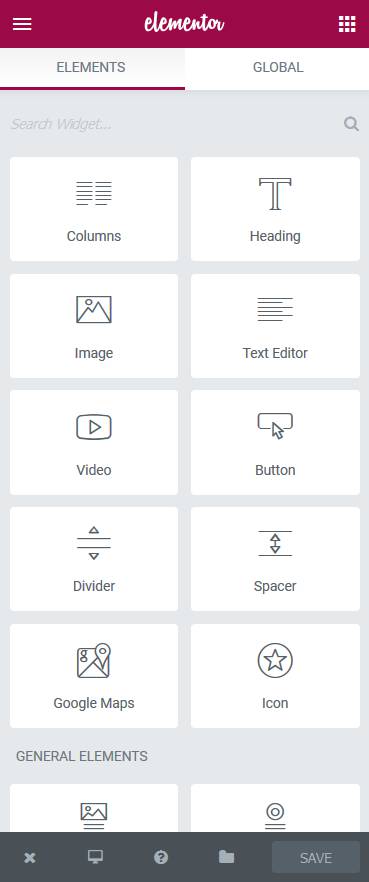If you are doing WordPress for a while you may have seen Visual Composer and some other Visual Editors that replace WordPress‘ classic editor for post and pages. Some of the major WordPress Themes come with their own backend editor like Enfold or “The Arc” which was announces as a Visual Composer Killer. All the aforementioned editor replacements are paid premium plugins and usually have a flaw: they slow down the performance of your WordPress site.
Although they all add value for you as a website owner and speed up the time needed to design a beautiful site – they all harm your sites performance in the long run.
It was not surprising that I was quite interested when I heart of a new visual editor for WordPress – which is both faster and free(!): Elementor – the new kid on the block has been on the WordPress market for 1 year or so and has reached 600.000 downloads at WordPress org within a 12 months timeframe. Not bad.
So I gave it a try on my personal playground at http://www.wordpress-expert.info
The plugin installation files of Elementor consist of approx. 5 MB.Compared to js_composer this is just ¼ th of visual composers 20 Meg needed. After activating Elementor you might want to configure the settings of Elementor first. Like Visual Composer you can define where (post, pages, custom post types) you want to use Elementor and which user roles are allowed to use the Elementor Editor.
A new pages is created and designed as you would do it with Visual Composer: Click Page -> Add new. Set the underlying page template to fit your screen-design (with or without a sidebar) and choose “Elementor” as the editor of choice.
What hit me right away was the performance of Elementor: Within very few seconds the canvas of Elementor came up and was ready to work with. Wow. This gous in line with the user rating of 4.9 (out of 5) on WordPress.org. Amazing.
On the left hand side approx. 25% of your canvas screen is reserved for the design elements of Elementor visual editor. The editor pane looks well organized and literally needs no manual (there is a help button in the center bottom area). Almost every function and all necessary elements can be found with 1 or 2 clicks.
Two small menus on the top left and right will open the settings of Elementor (left) and the design elements (top right) to be used on the canvas. Great stuff. Still impressed.
Elementor comes with a set of 60 pre-defined and ready to be used page templates. Each of them can be imported by a simple click. You might then customize a pre-defined layout which comes close to your design ideas. Not bad.
Bonus: You can save any layout you are working on as one of your personal templates within Elementor– and re-use it later on for more pages to come. Very handy.

Elementor Full Screen Canvas
The real work with Elementor doesn’t really feel like work. The cool thing about it: With the editing pane one the left and the preview on the right there’s no more need to toggle between editing and preview mode. It simply is the same. In addition Elementor Visual Editor comes with three viewing options for the page or post: One as it will be seen on desktop computers which is used for designing and is the default view, one view with 768 px is for tablet and a last one with 360 pixels emulates a smartphone. It looks a bit like the preview arrangement in Google Chrome.

Integrated Preview for Tablets and Smartphones
For designers this is extremely powerful as they can preview their results on all three devices in just one place. Really good job – guys. And I am still pretty much impressed.
After playing around with the Elementor designer for half an hour I could not find a flaw or error nor a bug. During that time I had created three test pages with Elementor. A first template imported from Elementor, a simple page just with small design elements and a last page with larger jpg images in it.
As usual I headed over to Pingdom and tested their speed after my caching plugin had the static page in its internal cache. All 3 pages loaded around a 0,7 to 1,0 seconds while being 1,0 to 1,6 MB in size. Again – pretty good job.

Elementor Speed: Around 0,7 to 1,0 sec loading time for 1,6 MB sized page
Elementor as a visual editor seems to be capable not just to replace Visual Composer due to its speed and amazing design concept. I assume there will be some enhancements over time too.
The best thing about Elementor sill is: It’s free and Opensource. Wow.
But I’ll probably be happy to pay 49 US-$ sooner or later (97 for 3 sites, 199 for unlimited number of websites) for Elementor Pro (https://elementor.com/pro/ ) to those amazing coders who brought Elementor to the WordPress Community.
Did I mention that Elementor has the potential to replace most visual editors for WordPress on the market? Stay tuned as we’ll publish more posts and reviews about Elementor here.
Did you already use Elementor? What are your experiences with this new plugin for WordPress? Leave a comment below.














